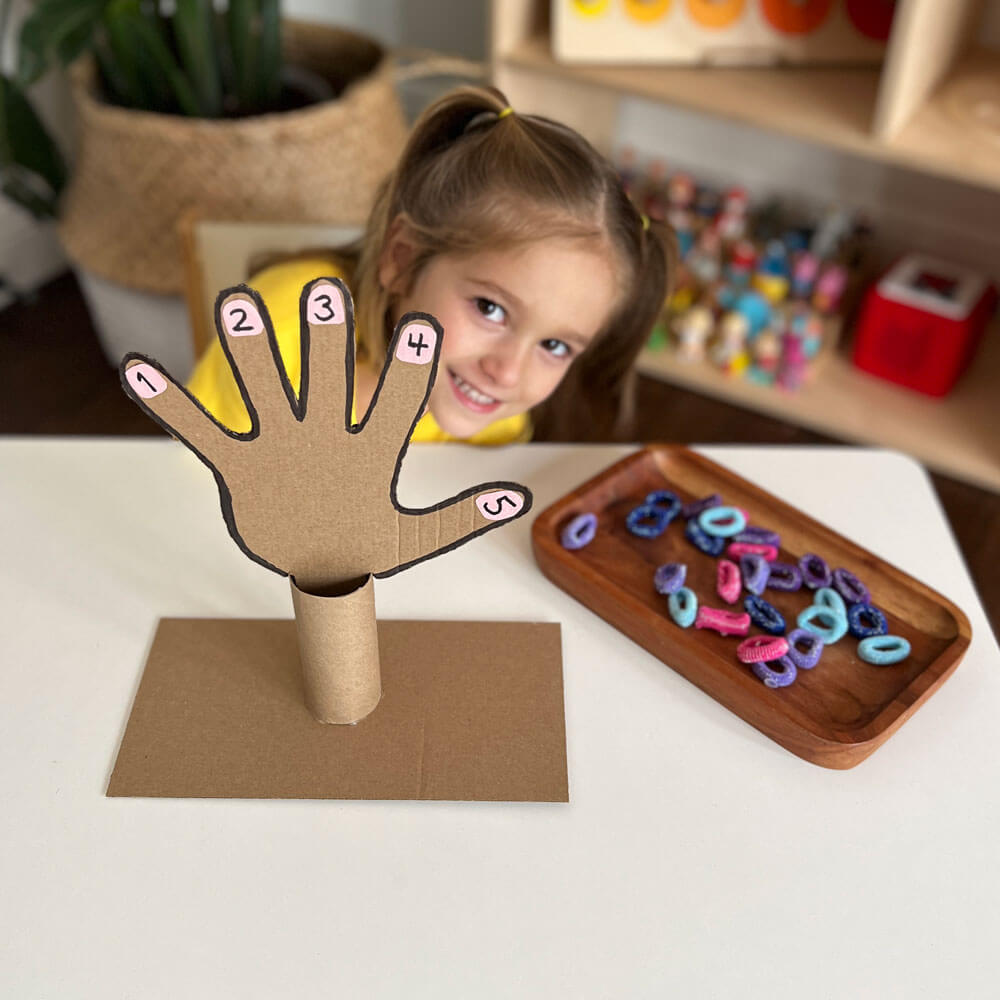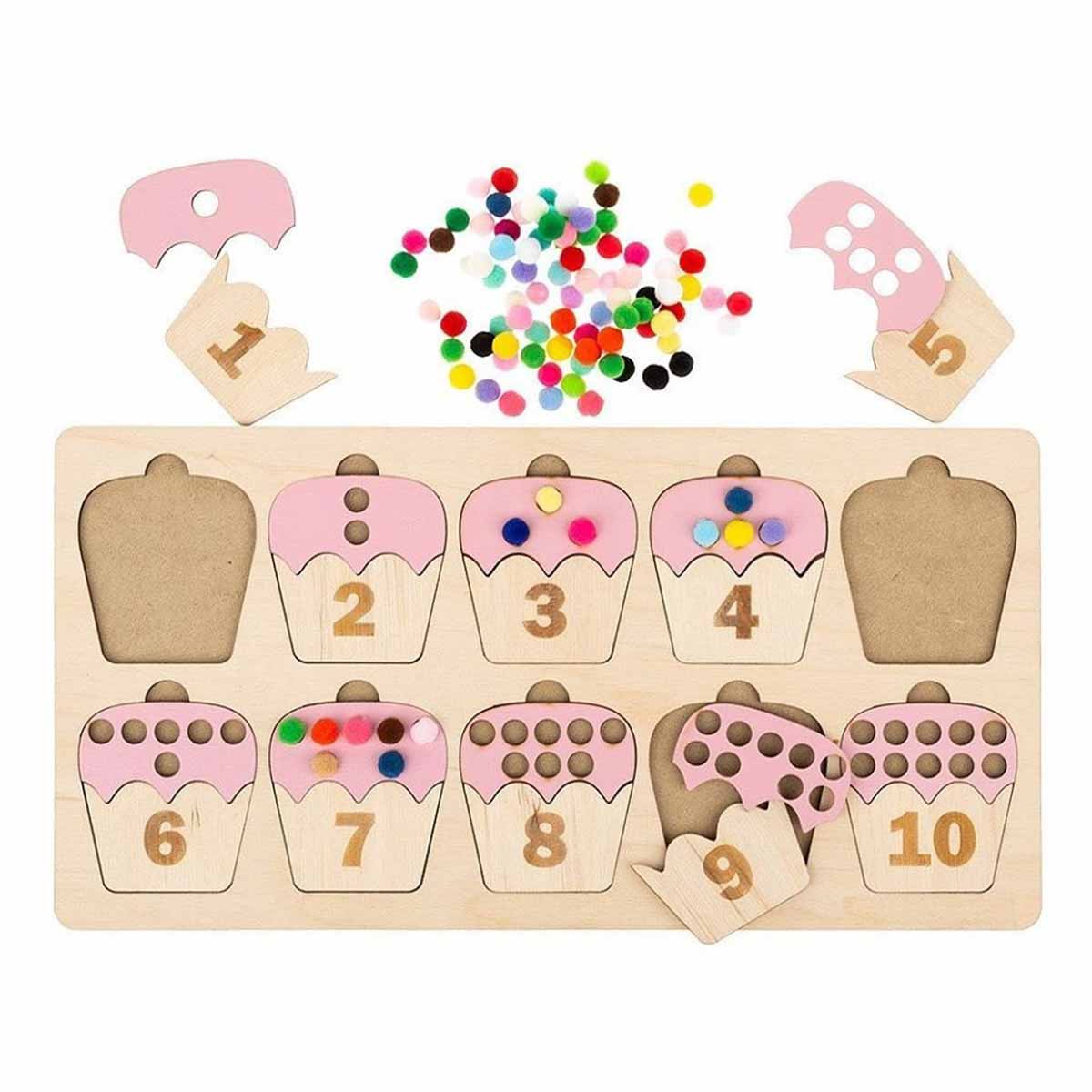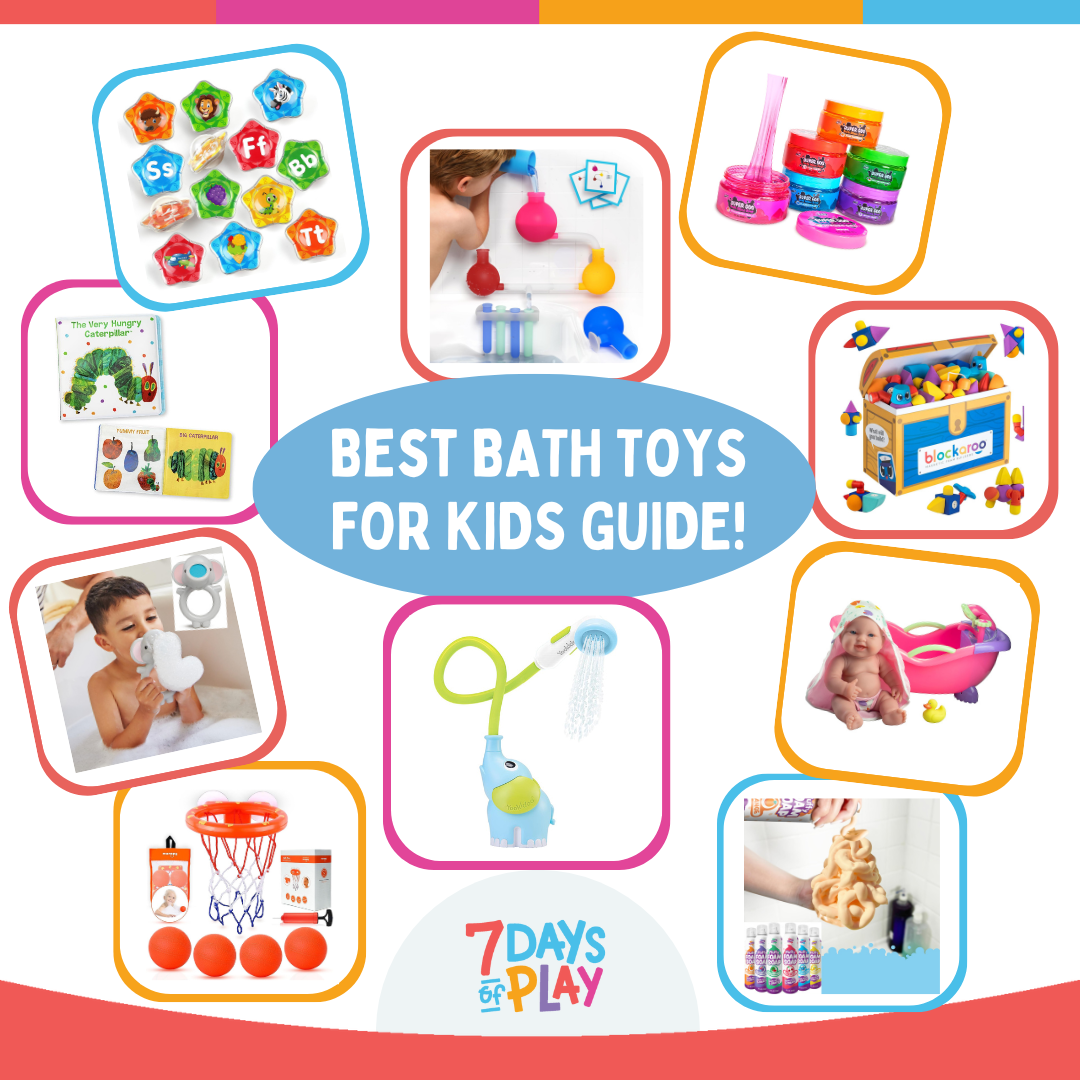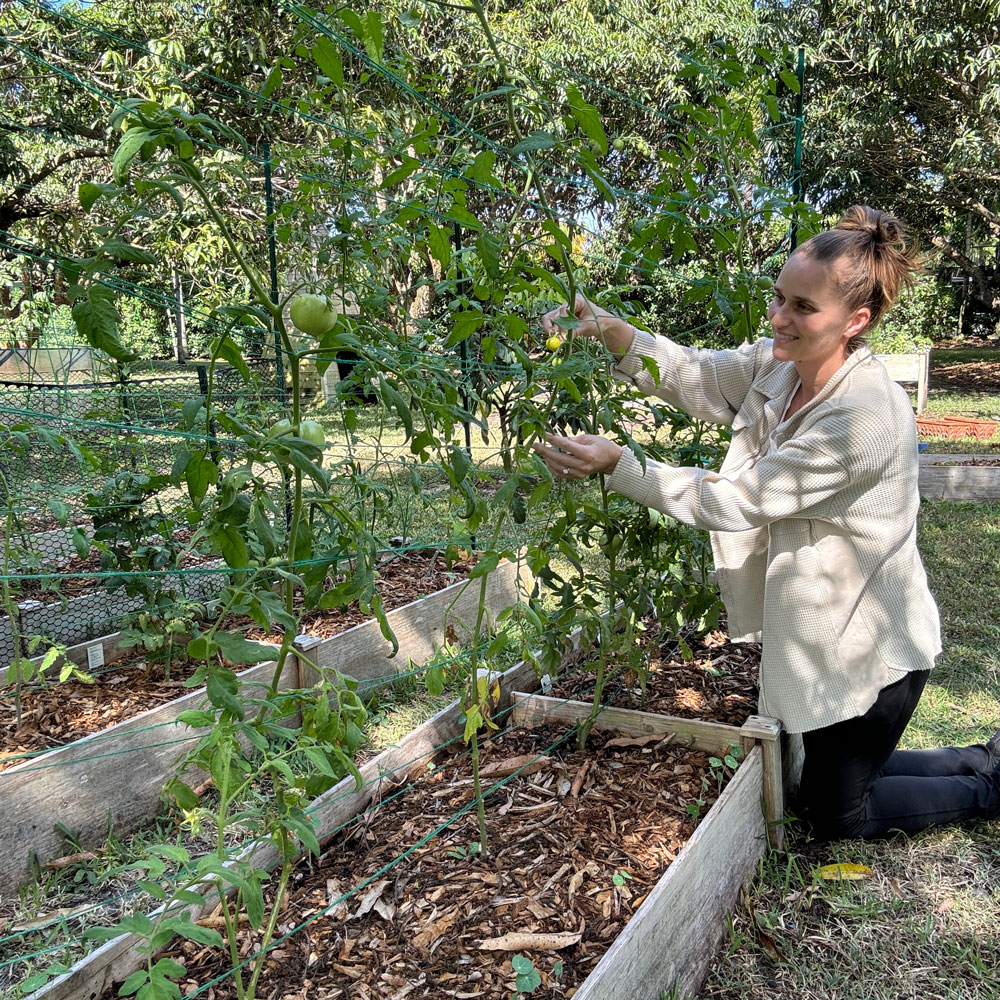Counting to 5: Hands-On Number Recognition Activity
Get ready to dive into the world of numbers with this counting to 5 activity, a practical approach to early math education. Keep on reading for step by step instructions on how you can make this too, plus in depth information about teaching kids one to one correspondence!
Where to Start: Counting to 5
Toddlers and young children often begin their numerical journey by focusing on the numbers 1 through 5. These foundational digits serve as the building blocks of early math education, providing a solid starting point for understanding numerical concepts. By mastering numbers 1 to 5, children not only gain the ability to count everyday objects but also develop the essential skill of number recognition. This early exposure to numbers sets the stage for more complex mathematical concepts down the road, making it a critical milestone in a child’s cognitive development. Our counting to 5 activity offers a hands-on and engaging way to help children embrace and enjoy this important early learning phase.
Skills:
Ages:
Prep Time:
Watch This Activity in Action!
In this counting to 5 activity, children actively participate in the learning process. Armed with a cardboard hand featuring numbered fingers from 1 to 5, they eagerly take on the challenge of matching the right number of hairbands to each finger.
This hands-on experience not only enhances their understanding of numbers but also nurtures their fine motor skills. As they carefully stretch and place each hairband onto the cardboard fingers, children refine their dexterity and hand-eye coordination.
This multi-sensory engagement promotes cognitive development alongside physical skills, ensuring that learning is a well-rounded and enjoyable experience. It’s a playful way for young learners to simultaneously build their numeracy foundation and fine-tune their motor abilities.
All activities should be supervised by an adult. As an Amazon Associate, I earn from qualifying purchases. This post may contain affiliate links.
Watch This Activity in Action!
In this counting to 5 activity, children actively participate in the learning process. Armed with a cardboard hand featuring numbered fingers from 1 to 5, they eagerly take on the challenge of matching the right number of hairbands to each finger.
This hands-on experience not only enhances their understanding of numbers but also nurtures their fine motor skills. As they carefully stretch and place each hairband onto the cardboard fingers, children refine their dexterity and hand-eye coordination.
This multi-sensory engagement promotes cognitive development alongside physical skills, ensuring that learning is a well-rounded and enjoyable experience. It’s a playful way for young learners to simultaneously build their numeracy foundation and fine-tune their motor abilities.
All activities should be supervised by an adult. As an Amazon Associate, I earn from qualifying purchases. This post may contain affiliate links.
How to Set Up This Counting Activity for Preschoolers
While creating this activity may take a little prep work, the end result is a versatile and enduring toy that can become a valuable learning resource in your playroom for a long time to come. The investment of time spent in its creation yields a rewarding educational tool that can be used repeatedly to reinforce number recognition and counting skills.
This homemade learning aid offers a fun and interactive way to engage young minds, making the process of learning numbers an enjoyable and memorable experience. So, while you may dedicate some time initially to assemble this activity, its enduring appeal and educational benefits make it a valuable addition to your child’s playroom, providing countless opportunities for skill-building and exploration. Step by step directions below!
Materials
- Toilet Roll
- Hair Bands
- Cardboard
- Marker
- Paper
- Toilet Roll
- Hair Bands
Step-by-Step Instructions
Step 1
Trace your hand on a piece of cardboard with a marker.
Step 2
Cut out the hand and write numbers 1-5 where the nails are. You can add construction paper for the nails if you’d like!
Step 3
Glue a paper tube onto another piece of cardboard.
Step 4
Make two small slits in the paper tube so that the hand can fit inside it vertically without falling.
Step 5
To play the game, match the correct number of hair bands to the correct number symbol.
Step 1
Trace your hand on a piece of cardboard with a marker.
Step 2
Cut out the hand and write numbers 1-5 where the nails are. You can add construction paper for the nails if you’d like!
Step 3
Glue a paper tube onto another piece of cardboard.
Step 4
Make two small slits in the paper tube so that the hand can fit inside it vertically without falling.
Step 5
To play the game, match the correct number of hair bands to the correct number symbol.
What is One to One Correspondence and How Can We Teach it to Kids?
One-to-one correspondence is a fundamental concept in early math education, and it serves as a crucial building block for understanding numbers and quantities. Essentially, it means matching each object in a set to a single number word, ensuring that there’s a correspondence or one-to-one relationship between the objects and the numbers being counted. For young children, this concept is often introduced when they’re learning to count. When counting a group of objects, each object should be paired with a number word in a consistent and orderly manner. For example, when counting a row of five blocks, children should point to and say ‘one’ for the first block, ‘two’ for the second, and so on until they reach ‘five.’ This process not only helps children develop an understanding of numbers but also reinforces their ability to count accurately and establish a strong foundation for mathematical comprehension.
Best practices for teaching one-to-one correspondence to young children involve hands-on and interactive activities that make learning enjoyable and memorable. Incorporating tangible objects, such as counting beads, blocks, or in the case of our cardboard hand activity, hairbands, can be incredibly effective.
Encourage children to touch and manipulate the objects as they count, reinforcing the connection between the physical world and numerical representation. Additionally, provide ample opportunities for practice, allowing children to count a variety of objects in different contexts. Gradually increase the complexity of the counting tasks as their skills develop, ensuring a gradual progression in their understanding. Finally, be patient and supportive, offering positive reinforcement and praise as children master this essential math skill, fostering their confidence and enthusiasm for further numerical exploration.
What is One to One Correspondence and How Can We Teach it to Kids?
One-to-one correspondence is a fundamental concept in early math education, and it serves as a crucial building block for understanding numbers and quantities. Essentially, it means matching each object in a set to a single number word, ensuring that there’s a correspondence or one-to-one relationship between the objects and the numbers being counted. For young children, this concept is often introduced when they’re learning to count. When counting a group of objects, each object should be paired with a number word in a consistent and orderly manner. For example, when counting a row of five blocks, children should point to and say ‘one’ for the first block, ‘two’ for the second, and so on until they reach ‘five.’ This process not only helps children develop an understanding of numbers but also reinforces their ability to count accurately and establish a strong foundation for mathematical comprehension.
Best practices for teaching one-to-one correspondence to young children involve hands-on and interactive activities that make learning enjoyable and memorable. Incorporating tangible objects, such as counting beads, blocks, or in the case of our cardboard hand activity, hairbands, can be incredibly effective. Encourage children to touch and manipulate the objects as they count, reinforcing the connection between the physical world and numerical representation. Additionally, provide ample opportunities for practice, allowing children to count a variety of objects in different contexts. Gradually increase the complexity of the counting tasks as their skills develop, ensuring a gradual progression in their understanding. Finally, be patient and supportive, offering positive reinforcement and praise as children master this essential math skill, fostering their confidence and enthusiasm for further numerical exploration.
More Ways to Play with Early Math!
Here are more fun ways to learn numbers and counting that also make great gifts!
If you want something really simple, this is perfect! It’s a puzzle made of wooden numbers.
This activity uses soft pom poms and wooden cupcakes for early counting. It strengthens fine motor skills too.
This handcrafted learning resource is great for learning counting and addition and subtraction of numbers up to 20.
These wooden blocks resemble numbers and grow with your child’s advancing math skills. It also includes a math guide and activity cards.
What’s Next?
How to Make Kids Bath Paint – Colorful Clean Fun
Explore a fun and easy way to make bath time fun for kids with our vibrant and homemade kids bath paint recipe!
The Best Bath Toys for Kids in 2024
Explore the best bath toys for kids! Discover the ultimate guide to bath time fun with these top picks that will make every splash memorable.
How to Layer a Raised Garden Bed and Make a Trellis
Learn how to layer a raised bed and create affordable trellises for thriving gardens. Explore our guide for expert tips & easy instructions!










